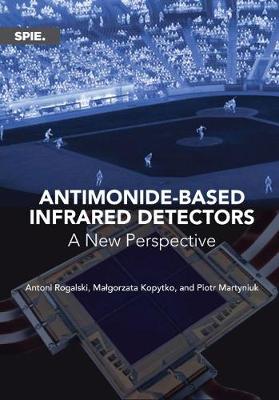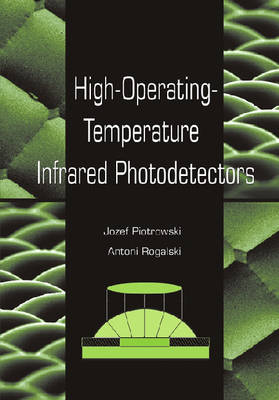Press Monographs
2 total works
Antimonide-based Infrared Detectors
by Antoni Rogalski, Ma?gorzata Kopytko, and Piotr Martyniuk
Published 30 April 2018
Currently, III-V antimonide-based detector technology is under strong development as a possible alternative to HgCdTe material systems. The apparent rapid success of a broken-gap type-II superlattice (T2SL) depends not only on the previous five decades of development of III-V materials, but mainly on recent ideas in the design of infrared photodetectors. The ability to tune the positions of the conduction and valence band edges independently in the T2SL is especially helpful in the design of unipolar barriers. Unipolar barriers are used to implement the barrier detector architecture for increasing the collection efficiency of photogenerated carriers and reducing dark current originating within the depletion region without inhibiting photocurrent flow. During the last decade, antimonide-based focal plane array technology has achieved a level close to HgCdTe. However, the modern version of the technology is still in its infancy. The advent of bandgap engineering has given III-Vs a new lease on life. This book describes current concepts of antimonide-based IR detectors, focusing on designs having the largest impact on the mainstream of IR detector technologies. It is suitable for graduate students in physics and engineering who have knowledge of modern solid-state physics and electronic circuits, and will be of interest to those working with aerospace sensors and systems, remote sensing, thermal imaging, military imaging, optical telecommunications, infrared spectroscopy, and lidar.
High-operating-temperature Infrared Photodetectors
by Antoni Rogalski and Jozef Piotrowski
Published 14 May 2007
This book presents approaches, materials, and devices that eliminate the cooling requirements of IR photodetectors operating in the middle- and long-wavelength ranges of the IR spectrum. It is based mainly on the authors' experiences in developing and fabricating near room temperature HgCdTe detectors at Vigo Systems Ltd. and at the Institute of Applied Physics Military University of Technology (both in Warsaw, Poland).The text also discusses solutions to other specific problems of high-temperature detection, such as poor collection efficiency due to a short diffusion length, the Johnson-Nyquist noise of parasitic impedances, and interfacing of very low resistance devices to electronics.

